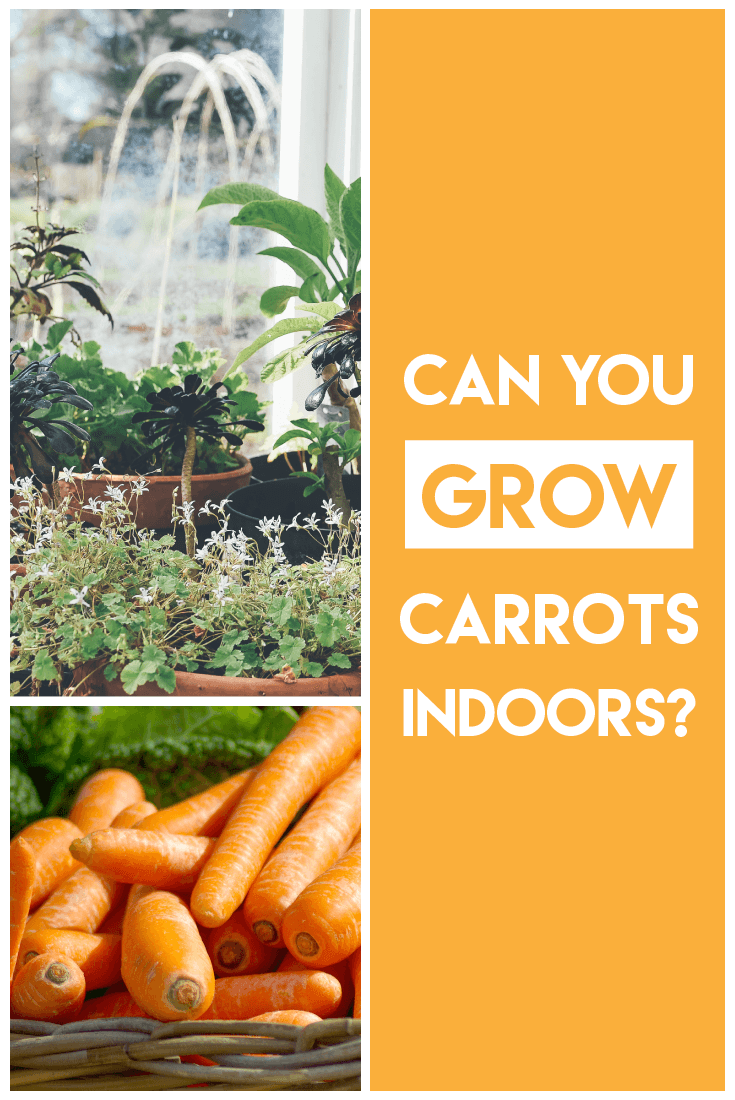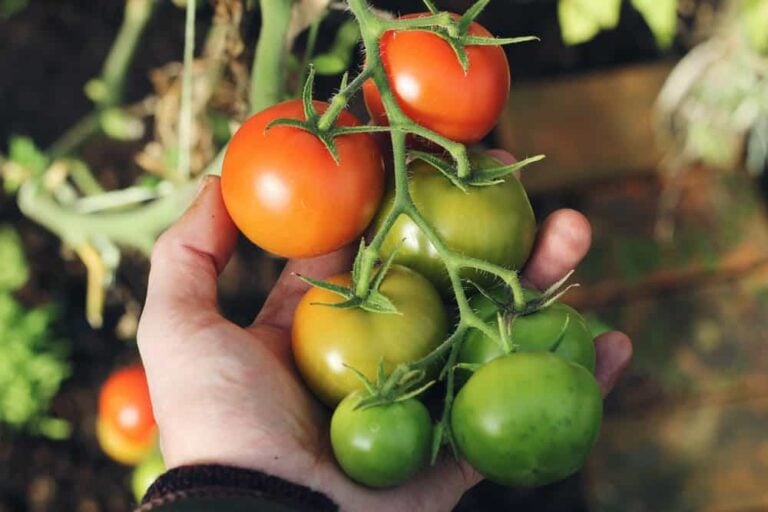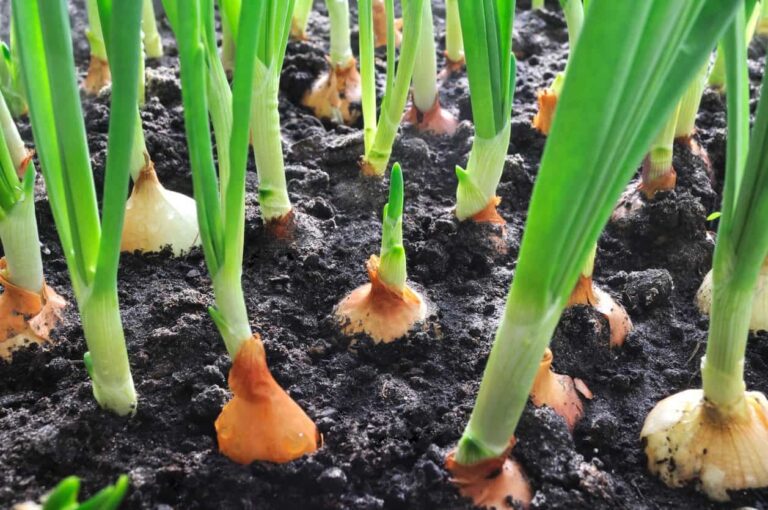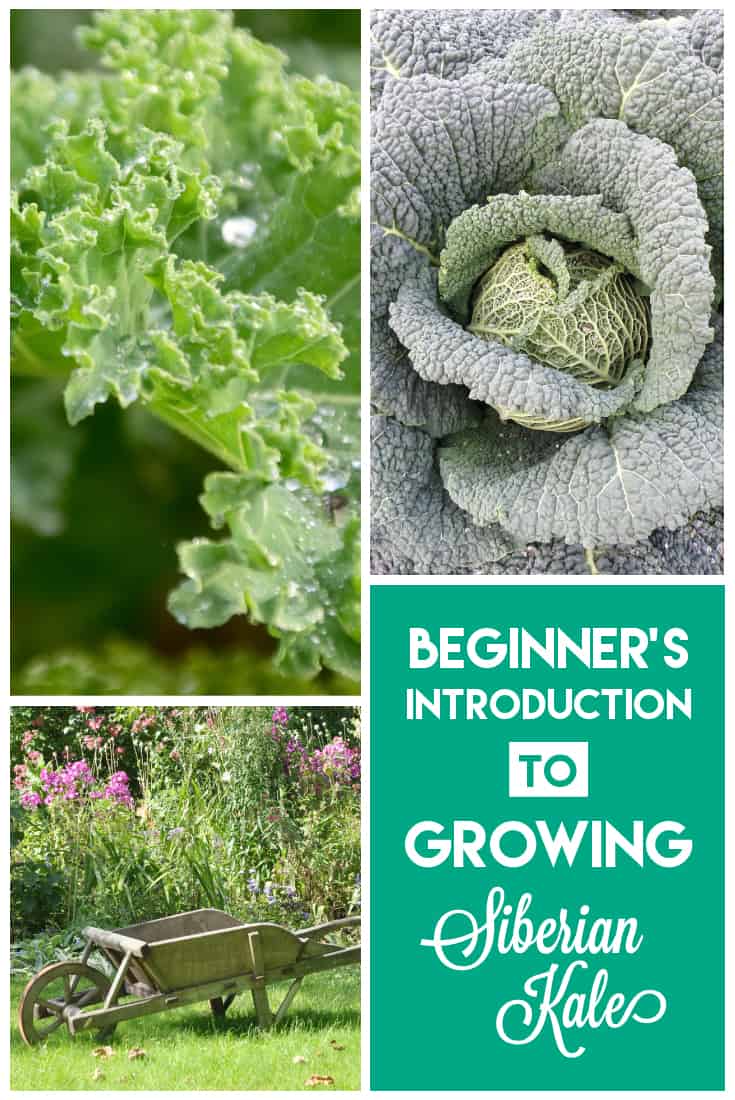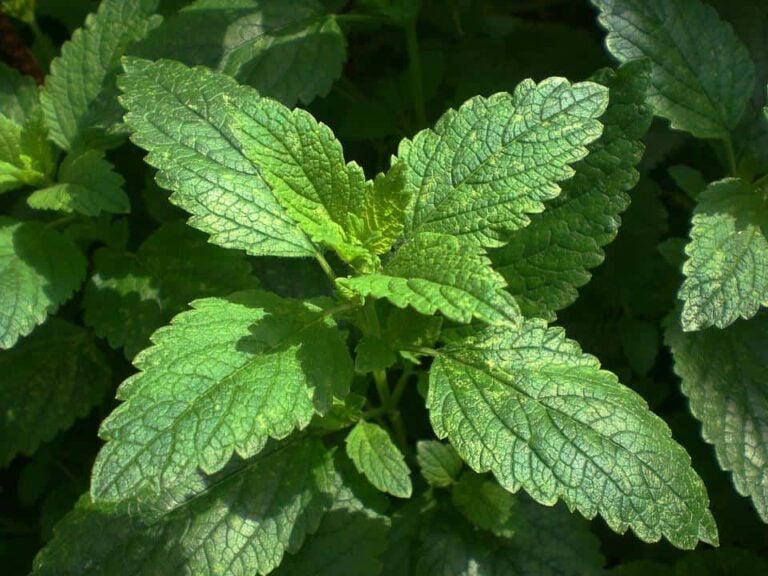Dwarf Evergreen Shrubs For Small Gardens And Landscapes
If you have a small but green space, you may want to fill it with plants in order to add some character. Depending on where your small space is, evergreen shrubs can be really great additions due to the nature of their foliage and the amount of care they need.
Dwarf shrubs are also great as they don’t take up lots of space as they grow.
When you have a tricky landscaping space sometimes it can be hard to decide what plants to choose to grow there. Growing plants is an investment and takes time so you don’t want to make the wrong decision either.
But a small space can also allow you to give more attention to plants that need it as there are less.
Luckily, our list can provide you with what we think are some really great ideas for some dwarf evergreen shrubs to use to landscape your area.
While this may sound really niche, you will be surprised how many of these plants you will recognize as well as the variety and low level of care they often need.
We hope that this article can provide you with some information on what to look for and consider with small spaces as well as some ideas of different plants that may suit your climate and vision for your garden.
Keep reading to learn more about plants as well as landscaping!
What Is A Dwarf Evergreen Shrub?
First things first, we’re not all botanists or gardeners here, so you may be wondering what a dwarf evergreen shrub actually is? Well we’re here to clear things up.
‘Dwarf’ Shrub
Both dwarf and evergreen are terms that are mainly used with shrubs and trees. The term dwarf shrub is synonymous with both ‘subshrub’ and ‘chamaephyte’.
A dwarf shrub for lack of a better definition basically means they are a shrub but they grow much lower to the ground, usually woody plants. This makes them great for small spaces.
If you have ever seen thyme, lavender, or rosemary growing, this low forming shrub is a great example of a dwarf evergreen shrub.
This also often means that the growth of a dwarf shrub is limited in some way. A normal plant from the Thuja genus can have exponential growth and grow particularly large, usually dependent on the plant’s maturity and root strength.
A dwarf Thuja specimen, on the other hand, wil be limited in its growth no matter its maturity and can potentially grow outwards more than upwards, when mature.
‘Evergreen’ Shrub
Evergreen is one part of a binary we often see in shrubs; most shrubs are either deciduous or evergreen.
A deciduous shrub simply means this shrub will grow foliage as the season goes on but will shed nearly all its foliage when the season ends. On the other hand, an evergreen shrub will often hold onto its foliage even when the season ends.
However, while the shrub may hold onto its foliage this can mean that the foliage may not be green, contradicting its name, but this can be a cool feature as the foliage will change color through the seasons.
This makes them ideal for these small spaces especially if you want to plant something you don’t need to worry about constantly pruning, harvesting and looking after, a dwarf evergreen is an ideal plant for this approach.
Keep reading to find our top picks.
Yucca filamentosa ‘Adam’s Needle’
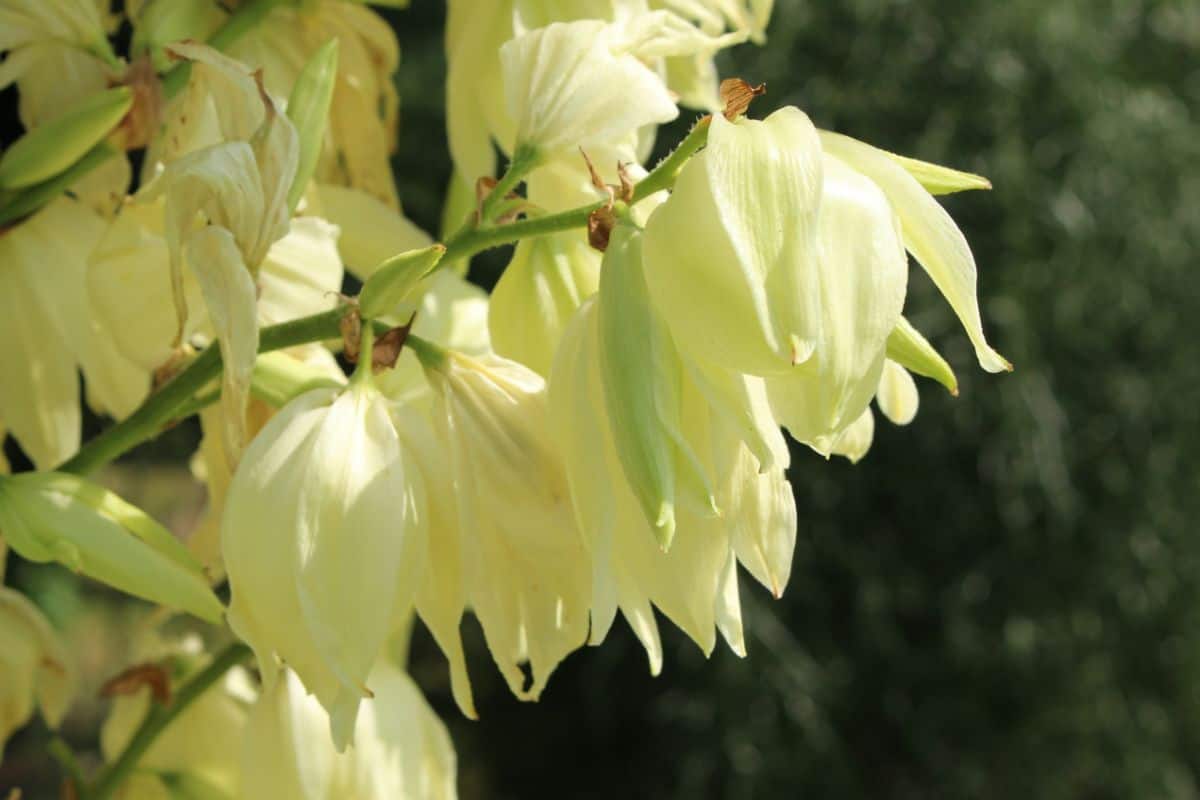
This is a good shrub to consider if you live in a hotter climate within the US, this plant naturally grows best within the southeastern parts of the US, its natural habitat. They are part of a wider family of plants called Asparagaceae, where asparagus also comes from!
While this is endemic to the south east of the US, the plant has also become naturalized further north from Cape Cod to Long Island. No matter if you are north or south, the plant loves to grow near the sea we’re talking sandy soil, scrub, rocky slopes, or even silt or clay soils.
As this is a part of the asparagus family, once you remove the seeds, you can actually eat the fruits of the plant, the petals are also edible.
The Cherokee people used to use the plant to hunt fish, the stem and roots have the effect of mildly stunning fish when fed to them allowing them to capture them.
In any case this small shrub is ideal for a small space as it grows everywhere in the US, but this is best for a small landscaping space or garden near the sea. ‘Adam’s needle’ flowers into large panicles of cream flowers.
Consider other cultivars such as ‘Color Guard’ for a more unique specimen that has bicolored foliage that can turn red in the winter!
Kalmia latifolia ‘Mountain Laurel’
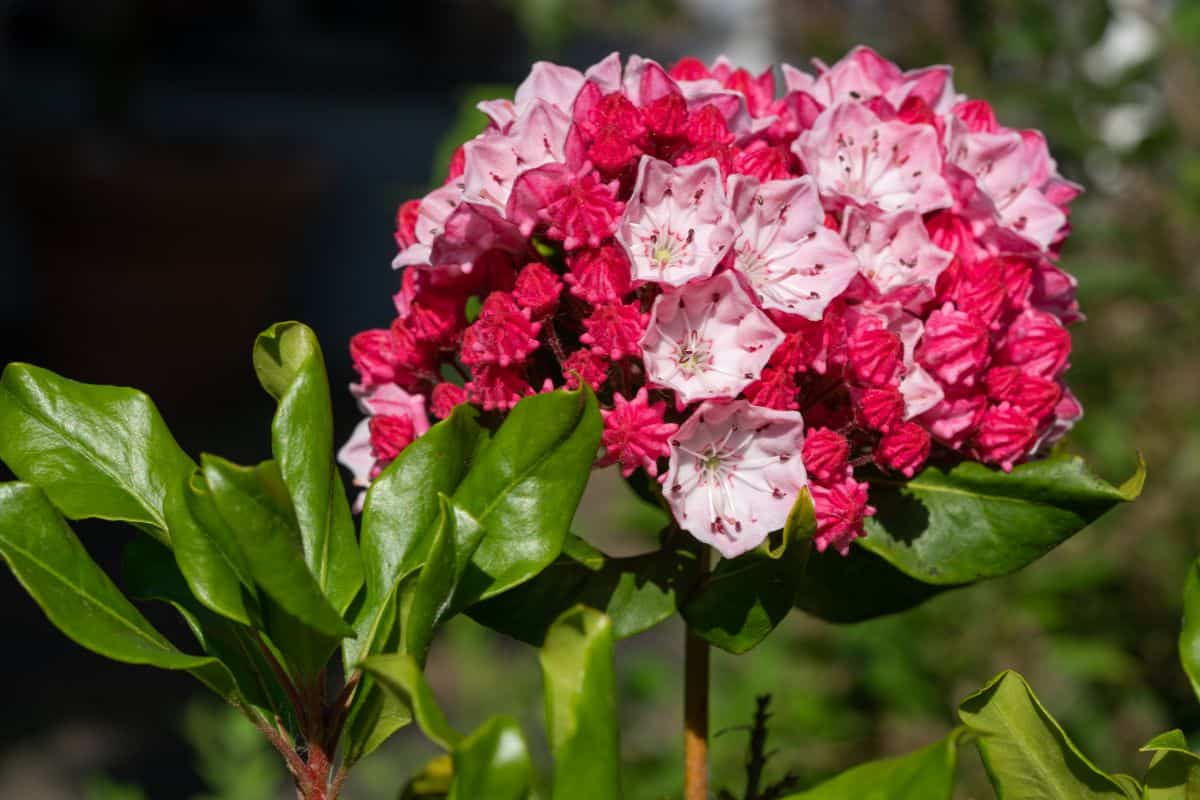
The Kalmia is a really great shrub that is broad leaved, and has many stems, it usually forms into thickets that have large clump forming flowers that often have quite a unique inflorescence.
The stamens are loved by bees and other pollinators, they have an interesting mechanism that fires pollen out like a projectile when touched by a bee.
The petals of this mountain laurel are really lovely and can bring lots of detail to a small space, the main color is white but with splodges of ruby red marks on the petals with a bright yellow center.
This kalmia is a great way to bring some green foliage as well as curious inflorescence into a small space, adding texture as well as beauty. Moreover, the plant grows really well within the mountainous areas in the north and west of the US.
Juniperus squamata ‘Blue Star’
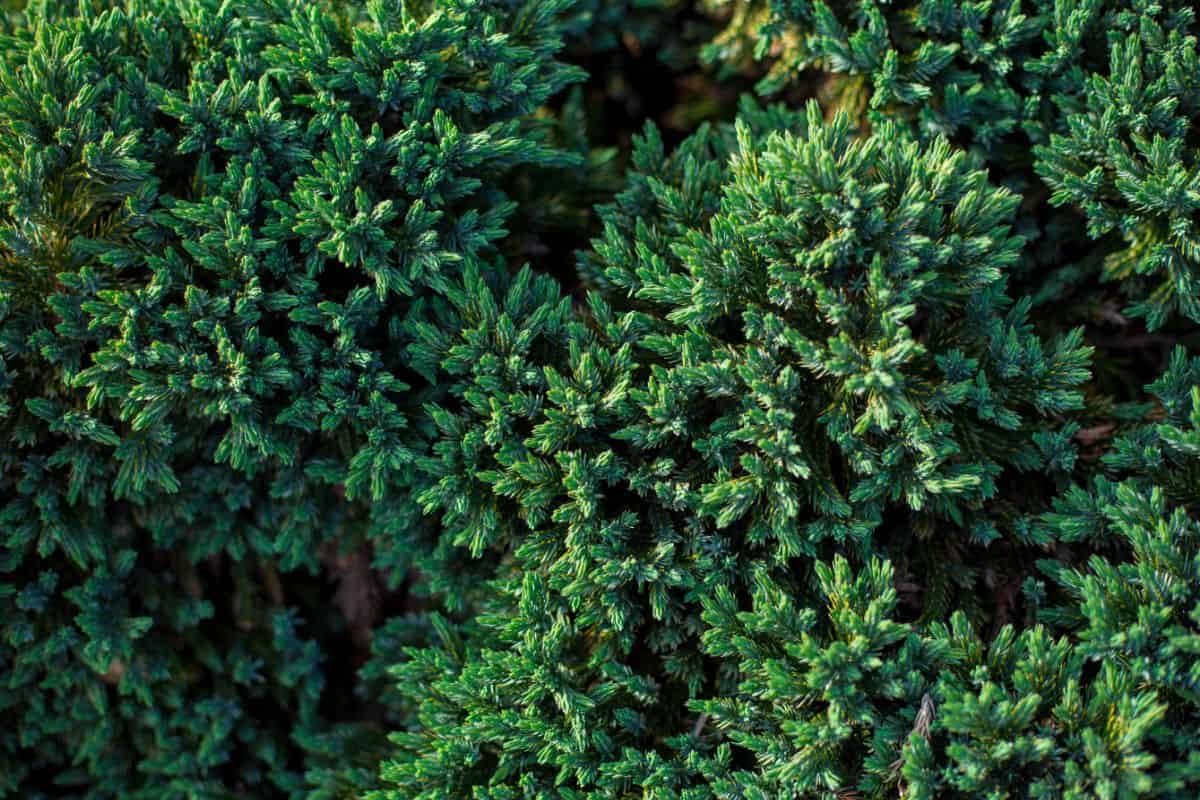
This variety of the Juniper bush is a smaller specimen that is one for the foliage lovers of the world, a great subsidiary plant to add to small areas which won’t be the focus of attention but adds lots of good foliage action with not too much care level.
‘Squamata’ is actually a Latin epithet that means small leaves.
While the juniper bush is actually endemic to the Khyber region of Pakistan, part of Afghanistan, as well as other parts of China. In general the plant grows in the higher mountainous regions of the world, around 1600 to 4900 m altitudes.
However, since its export from the Netherlands in 1964 the plant has become popular in the US and if you live in a mountainous area you may find some good use of this shrub.
The panicles of blue foliage are really beautiful and do well to replace the fact there is no flower on the plant. Yet it remains quite compact and low forming which is ideal for smaller space growing to around 4 ft.
Erica Carnea ‘Springwood Pink’
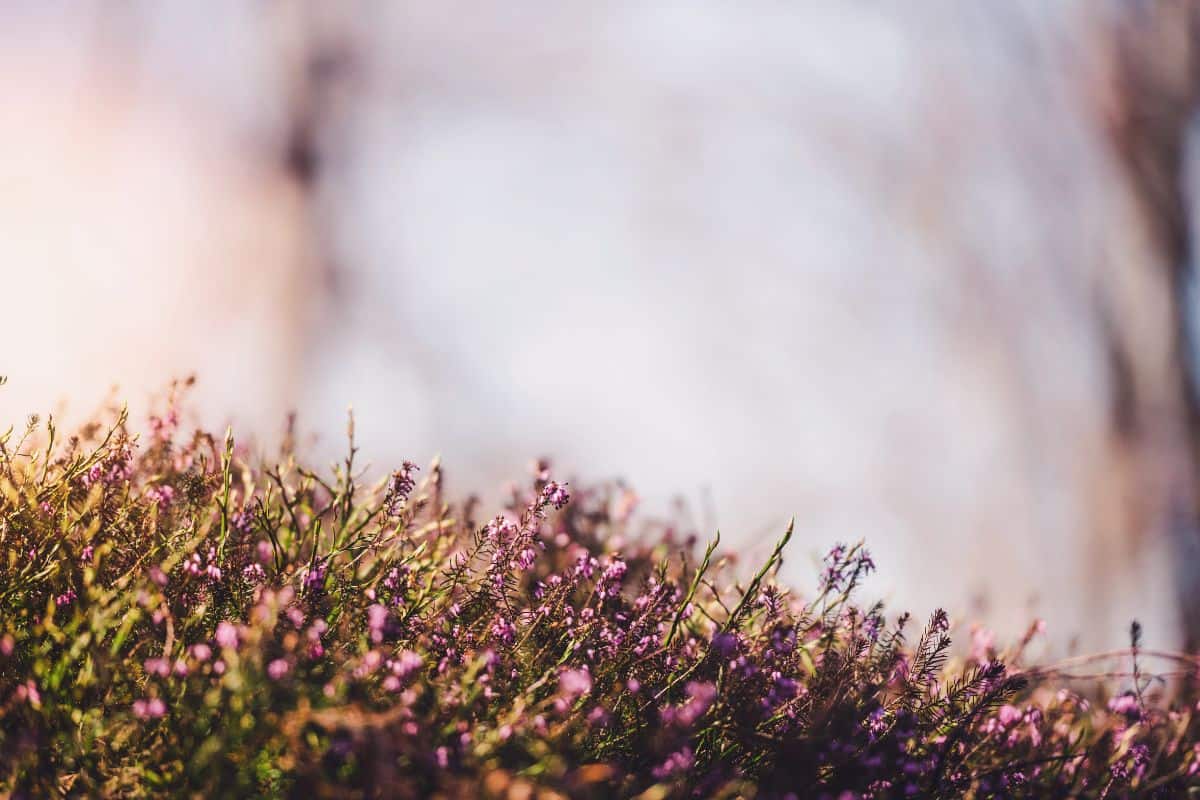
For a spring bloomer, this could be a really great plant to bring color in preparation for summer.
As a winter/spring interest this plant can be ideal for those small spaced as well as in peaty, alkaline soils of shady spots – It’s great in these specific locations or even a rock garden.
This ‘winter heath’ actually grows endemically in the Alps of Northern Europe, so can work best in the northern, more temperate, states but can be a shock of European color in your winter/spring season.
It doesn’t like warm climates of the far south; it’s best grown in cooler summer climates.
This plant has even been known to bloom in the snow and is very cold hardy, making it ideal to plant and admire rather than care for a lot. ‘Carnea’ is actually a specific latin epithet for ‘skin colored’ or ‘deep pink’ which reflects the color of the flowers that surround each panicle.
Moreover, the plant is evergreen so always has some foliage and bloom to show off.
It never really grows too high, and can even be ground cover when mature. But the plant generally requires very little pruning, not too much watering nor will it ever really grow too wildly.
Ilex x Meserveae ‘Blue Princess’
While this plant is actually quite easy to care for once you have it, it has some more expert features that more experienced gardeners can unlock such as cross pollination.
Generally the plant can enjoy many different soils but prefers acidic in most conditions, and appreciates most sun it gets as it can grow in either shade or full sun. As well as being generally pest and disease free the plant remains a really hardy and worthwhile purchase.
To get the most out of this plant some pruning in the early spring can help to make new growth stronger.
The small flowers of the holly bush appear in spring while the bright red berries come in the fall and remain super showy throughout the winter months – an ideal specimen for colder climates.
You can get a lot out of this plant for quite little effort, in the winter you can harvest some of the branches and make a Holly Wreath which is great Christmas decoration, as well as other fun uses for the beautiful dark red branches and luscious green leaves which are embellished by the red fruit of the bush.
Moreover, New Englanders will be glad to hear this bush won the Cary Award for how well it suits the area of New England, as well as RHS merits in England.
Hesperocyparis macrocarpa syn. Monterey Cypress ‘Lemon Cypress’ syn. ‘Goldcrest’
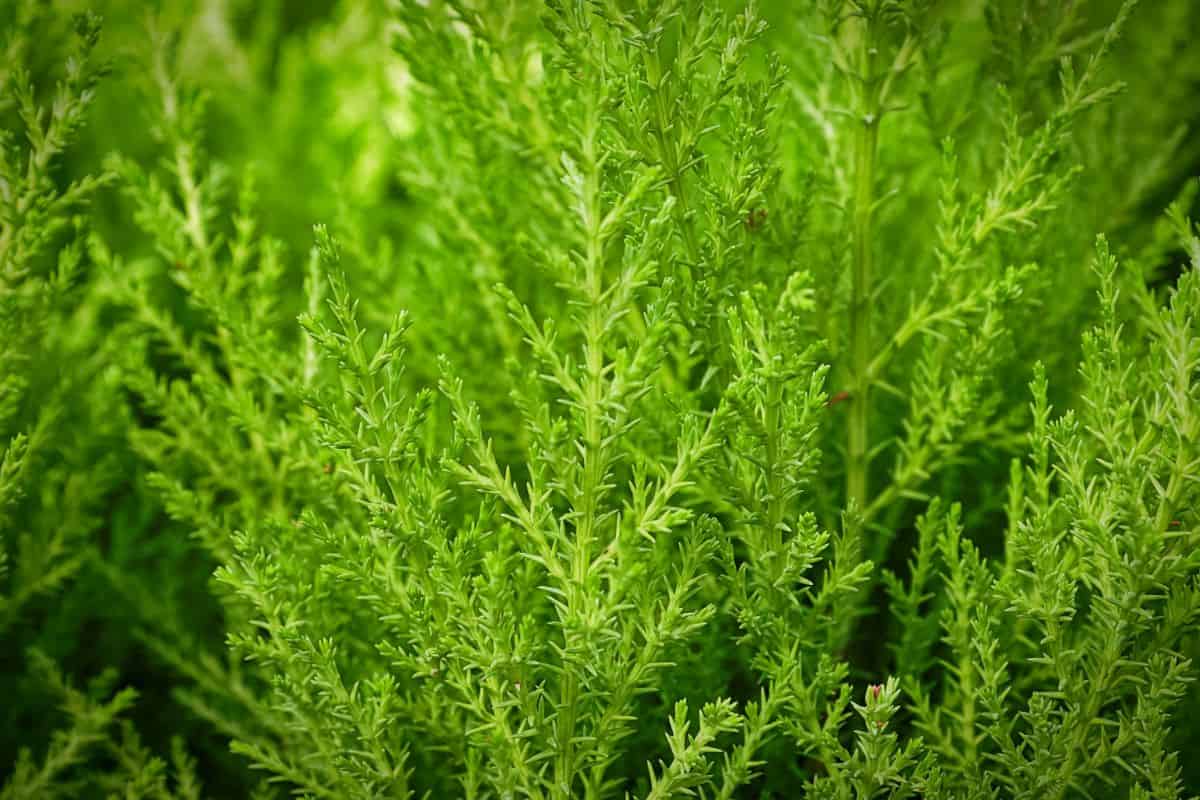
This is a cultivar of the Cypress tree which is actually native to California and particularly the ‘Cypress Hill’ area. It is a dwarf species of what is essentially a tree, the Cypress tree, but is dwarf tree and acts much like a shrub would.
This lemon cypress cultivar can actually grow up to 5m which can be tall but still remains shockingly small in comparison the highest forming species within the genus.
You could even go for a dwarf lemon cypress (Cupressus macrocarpa) which can reach a mere 3 feet making them a little better for houseplants than landscaping so this middle option can be best.
They are great for a small space because, following some simple rules, they don’t require too much care but can bring a lot to a space.
So long as your soil can be well drained, a lemon cypress will grow practically anywhere, including acidic, alkaline, and neutral soils which is one of its biggest advantages.
As this plant is native to California you can imagine the sorts of conditions it prefers, almost always direct sun, never shade, and requires a good amount of watering in the plant’s growing season.
But this is normal for plants in such a hot environment, you will be watering a lot anyway. Yet, once the roots are established after around a year it requires less watering.
One reason many love the Lemon Cypress, beyond growing well in Cali, is that the plant has a really lovely lemon scnet, as most trees in this genus does.
Additionally, it has some really nice foliage that is a near fluorescent yellow/green color which is super eye-catching in the summer.
Thuja Occidentalis ‘Little Giant’
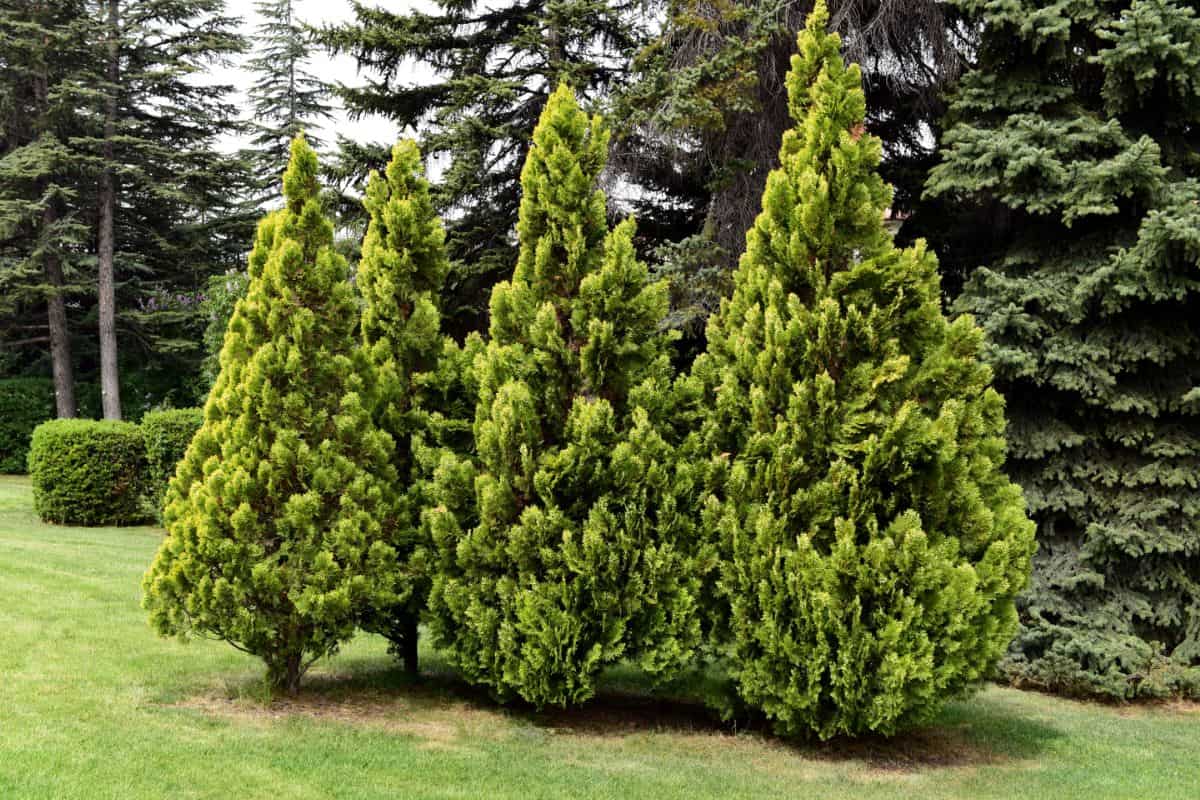
The Thuja is a common and popular shrub, but this variety can really show the variety within the genus as well as a great low shrub that is spectacular and curious thanks to its dwarf features.
In other words, this is a globe shaped shrub that forms naturally into a globe with the help of a very small amount of pruning.
The Little Giant has some really neat foliage that will naturally form into this ball shape without too much encouragement making them great for low effort small landscapes.
Another reason they are loved so much by gardeners is that they literally remain green all year round, even in the winter.
Moreover, the plant is quite rugged and can grow in the cold areas that get quite wet, even ground that is very salty.
Yet, during the summer months this Thuja cultivar does best when being exposed to full sun. In the summer months it can require a lot of watering depending on where you are but is generally more hardy in the cold.
The shrub looks great as it naturally forms into this sphere without much help, prune for the best results, but the plant is generally low effort so long as it is watered correctly and has the right conditions.
Buxus ‘Green Velvet’
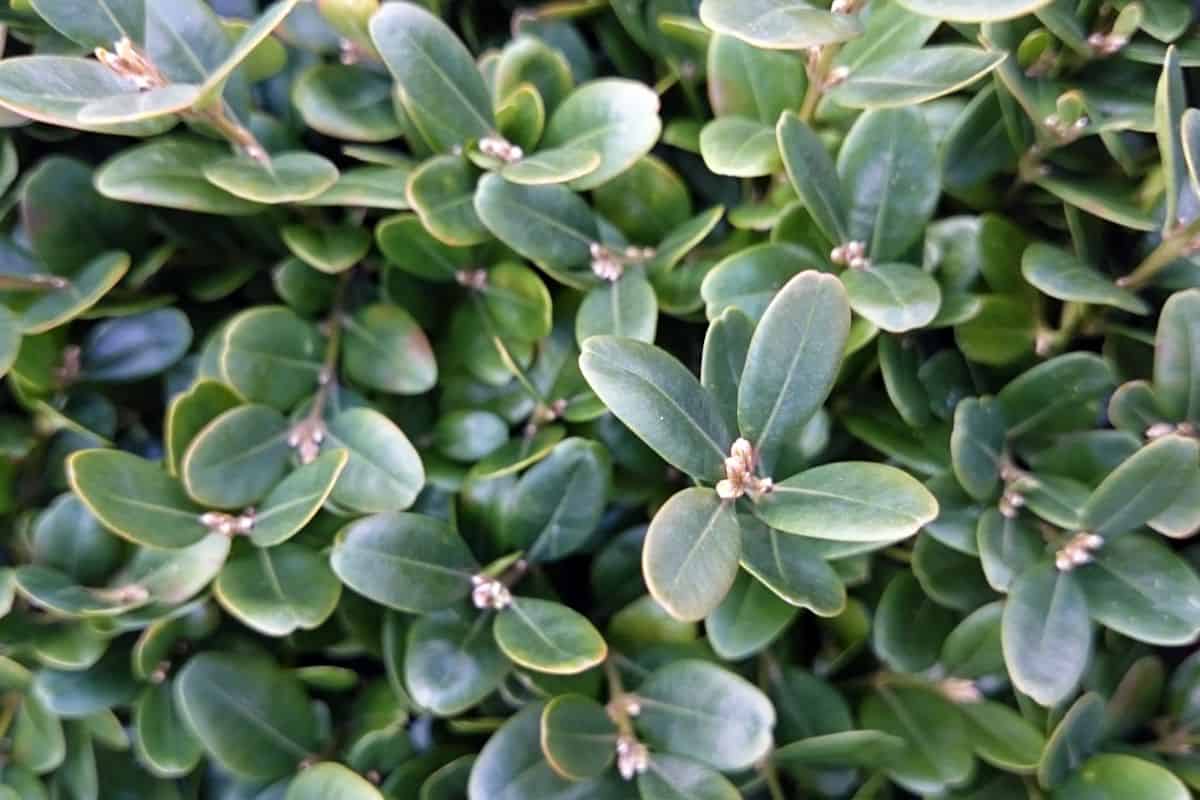
The buxus is a really versatile plant, especially with this specific cultivar. They are great for what you might call a ‘formal’ shrub that doesn’t have flowers but displays deep green foliage that many find ideal.
One reason many find this plant ideal for a smaller space is that they are very responsive to shearing. This means you can turn them into any shape you like and with some continued low level pruning they should keep this shape for a good period of time.
Many actually chose to create plant sculptures from this plant due to this responsiveness, which is also great for small spaces and allows you to add your own shapes to your garden.
They are also good for sculptures because they are evergreen so they don’t shed teh design you have just made. Although it is best to shape before the summer period.
So long as you have a shady spot they should be fairly easy to grow, they do well with some sun as completely full shade can cause the density of foliage to decrease, while full sun can actually damage the plant.
However the plant will happily grow among most soils so long as they aren’t too far one way or the other on the pH scale.
Picea Pungens ‘Glauca Globosa’
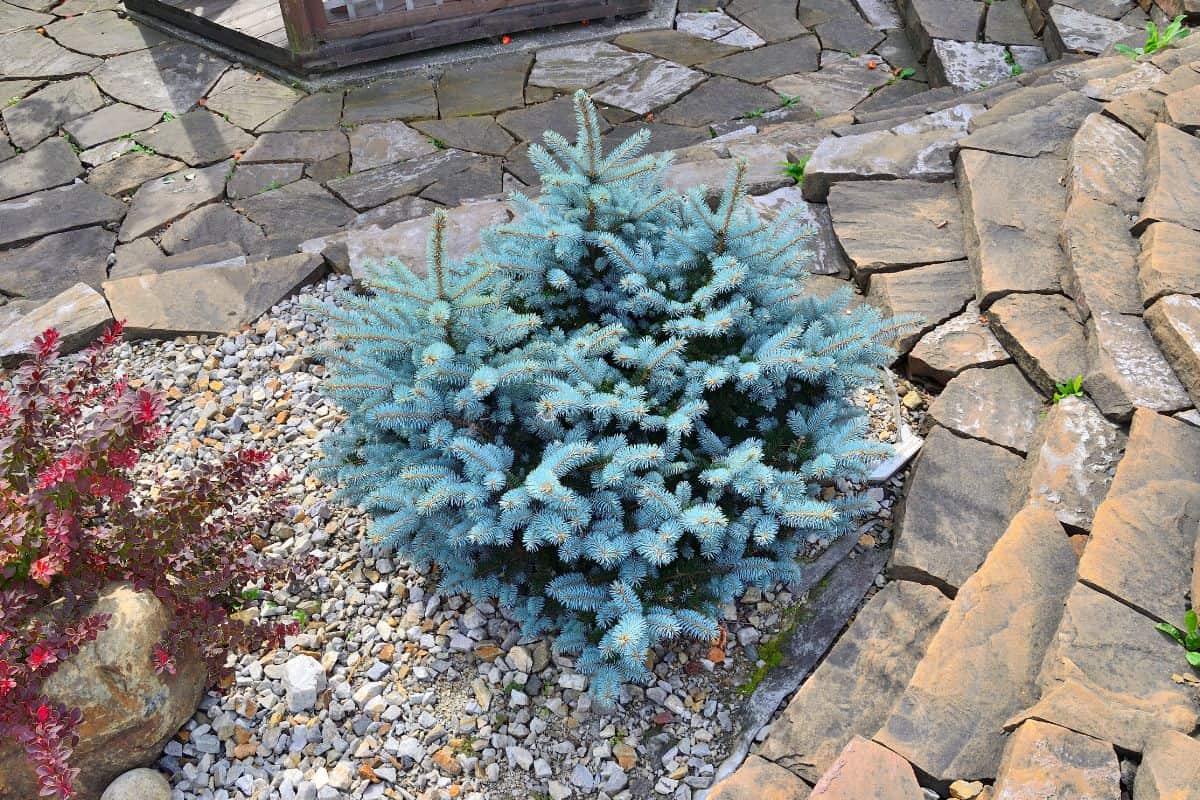
This Picea specimen is basically a dwarf version of what is usually a large tree, the blue spruce. The parent blue spruce can grow really high in the right conditions and are the skyscrapers of the COlorado mountains.
However, this ‘Glauca Globosa’ species are dwarfed and provide a similar enchantment but in smaller spaces.
The general species of spruce this dwarf coms from is found all over Arizona, Colorado, Idaho, New Mexico, Utah, and Wyoming so if you are based in the US then its worth looking into the dwarf species of the genus.
In this dwarf species you still get the enchanting blue needles that look like something from Narnia, for such an unassuming plant it really adds some special vibes to a small space, Much like the Thuja we mentioned, this spruce will naturally form into a spherical shape with some pruning.
When mature it can reach around 5 feet.
This dwarf shrub is fairly slow growing which is ideal for these small spaces you want to plant in then leave without worrying about pruning, although the occasional brush up may be required as the needles are sharp – depending where you are.
In any case the plant loves slsightly acidic soil and full sunlight.
Pinus Mugo ‘Aurea’
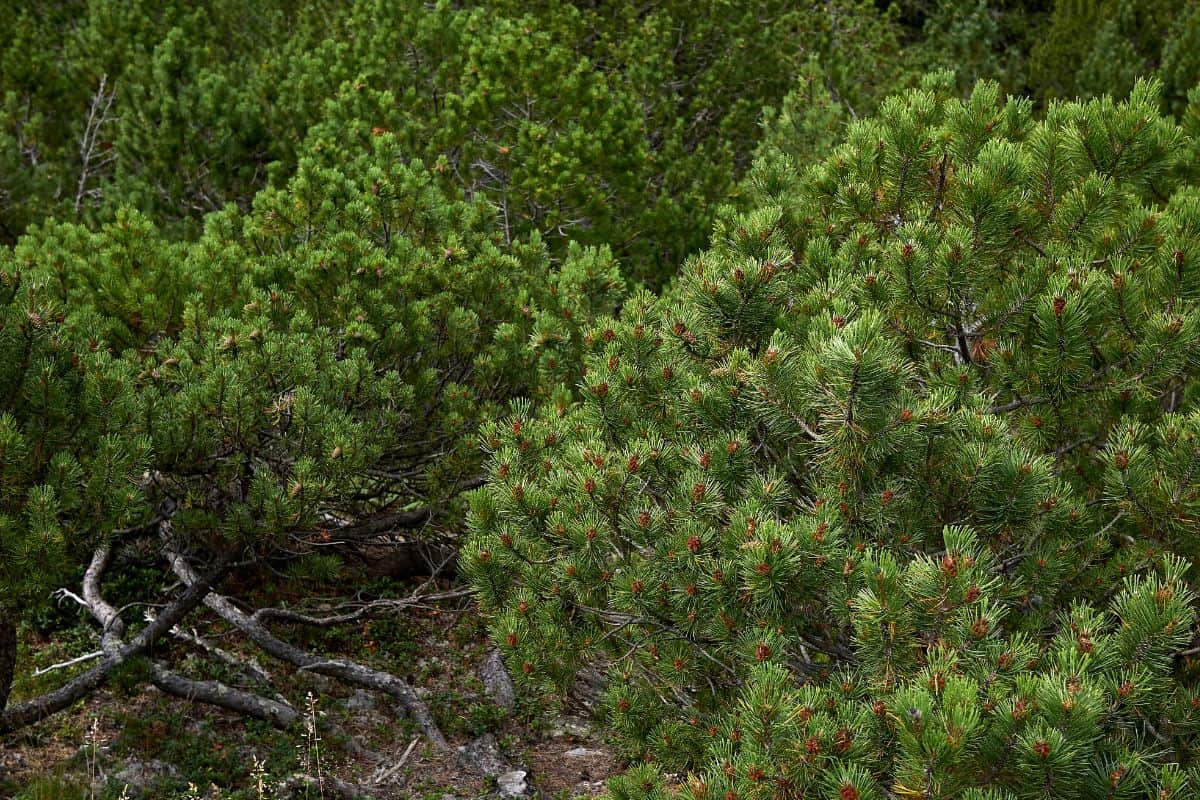
More dwarf species of large trees here, but if you want to make a mini forest within a small space many of these dwarf varieties are ideal.
Specifically, this ‘Mugo Pine’ comes in quite a few varieties, and even its dwarf species could take the form of a large tree but even in the wild it’s more common for this ‘Aurea’ variety to form as a low lying evergreen shrub.
The dwarf ‘aurea’ generally halts growth around 3 feet.
The pines of this pinus ar emuch more spread out and long than in comparison to a spruce. THe branches are woody and long and often exhibit the long sparse needles on the end.
As the plant matures and a matrix of branches presents itself the plant becomes quite magical, and brings a lot of green and brown shades to a small space.
Generally, the mugo pine does best in the cooler climates of the temperate north and midwest, but is pretty open to any solid such as sandy or clay.
It’s worth noting that the more sun this tree receives the more yellow the pines become which is not a sign of dehydration as it may initially seem. Moreover, the plant does appreciate a high level of drainage.
Coprosma repens ‘Tequila Sunrise’
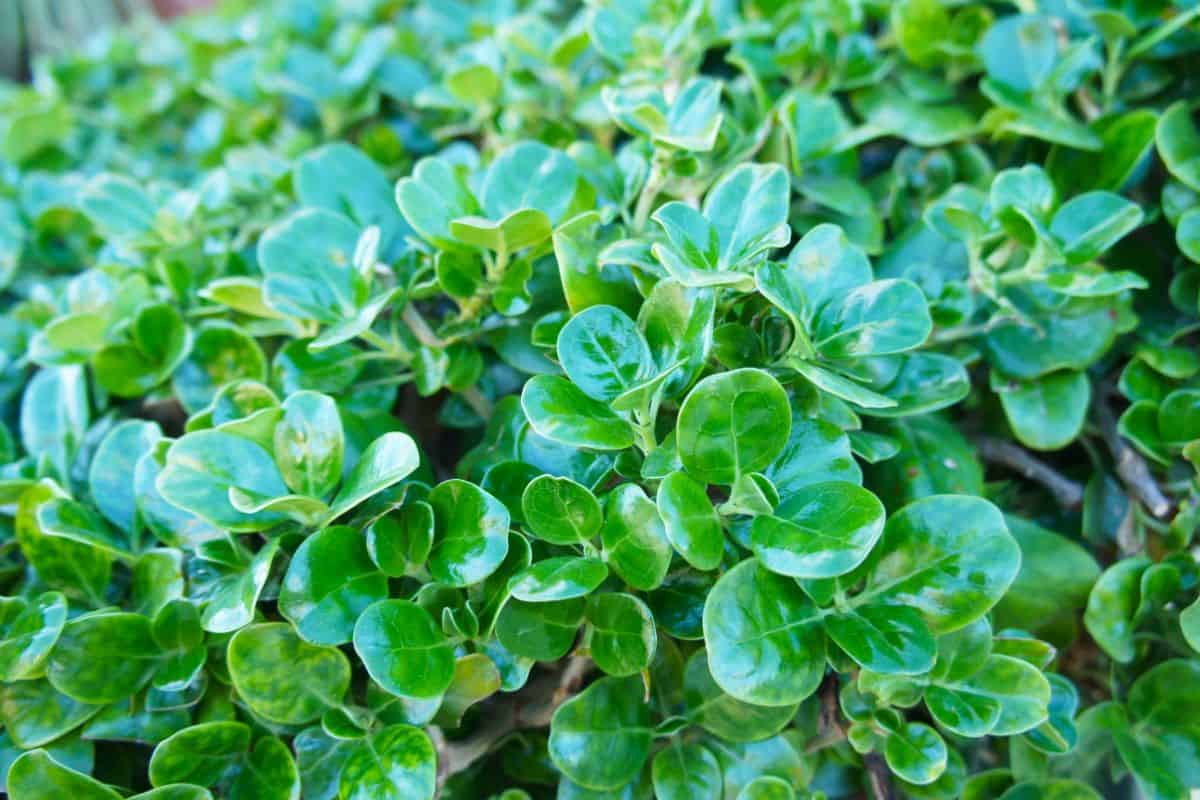
We all love a Tequila Sunrise, and it is never more true than with this Coprosma specimen. If you want something dark, brooding, and a little different from your evergreen dwarf shrub then the Coprosma is a good place to look.
Generally, the foliage of the Coprosma can often be variegated but is generally fairly unique to each specimen, they can have a different ratio of green to red in the foliage and this can change throughout the season which is why they are great for a small space.
This often has a lot to do with the environment it is grown in, and it is known as the ‘Mirror plant’ for this reason.
This ‘Tequila Sunrise’ cultivar is more of a yellow and red bi-color, hence the name. It has won the RHS merit for its interesting display of colors.
Moreover, Crocosma in general are actually dioecious, which means that they actually produce both mae and female flowers and each gender has its own inflorescence and other differences.
The plant has some quite thick foliage that remains very glossy and almost succulent, the leaves will vary in size depending on their exposure to the sun and water, etc.
Often the leaves become very curvy and it isn’t unlikely to see cylindrical leaves.
Thanks to the glossy leaves the plant can survive salty spray from the ocean well and is suited to smaller coastal gardens well. It prefers well drained and sandy soils but can also deal with heavier soil too.
Escallonia laevis ‘Pink Elle’
The plant generally has quite leathery and toothed leaves which require basically no pruning. The flowers form in compact panicles that are really beautiful in the summer sun.
This plant is ideal for the hot southern states that get a lot of sun as it really enjoys the sun and actually requires only a small amount of watering.
When in these sunny conditions the Escallonia laevis can even have two blooms, one in summer with big pink flowers who fade to white, a second flush will occur in the fall.
They will require some protection in winter but if you are in a hot climate this may be less necessary. They remain evergreen but deadheading can help them flower better in the following seasons.
This particular cultivar was developed for its wind resistance thanks to Ludovic Ladan, the cultivars creator, who grew the plant in his notoriously windy plant nursery in Northern France.
As this cultivar has this wind resistance it can be good for coastal countries but may suffer from salt spray so some cover can be recommended.
Even more impressive, is that he plant is listed under the RHS’ ‘Plants for Pollinators’ initiative for the plant is a really good way to provide pollinators with ample nectra and if you want to help out those creepy crawlies and your local ecosystem this can be a worthwhile plant to look into.
Final Thoughts
It’s clear that there is a huge variety of different shrubs that remain evergreen while also being dwarfed and great for a smaller garden
With a smaller garden you generally want plants that can still make a statement without taking up lots of space. You can achieve this with texture within small spaces which is potentially the best option.
This means when you look into the small details you find texture and complexity rather than more of the same.
Evergreen shrubs are great for this as they will change slightly as the season progresses but will not shed all their foliage and become quite undesirable.
An evergreen shrub can often change color and shape as well as inflorescence during this evergreen season so they can bring slightly different looks to your garden without much effort on your part.
With a small garden or landscape you can opt to have very low effort plants you can just leave to let grow and change with the seasons, this can be ideal for a small public landscape or garden which needs adorning with plants.
However, these smaller areas generally mean less specimens and as a result that means less time spent watering, pruning and enacting general care on your plants.
With this in mind it can be worth finding more needy plants that can reward you more because, as there are less of them, you should generally be able to spend more time on them.
We hope you have at least gained some ideas on what sort of dwarf evergreen shrubs would look good in the small space you had in mind.
As well as having learned something about dwarf evergreen shrubs, their variety, and how to care for them indifferent situations.
Frequently Asked Questions
If An Evergreen Shrub Changes Color Is It Dead?
Not necessarily, on the one hand you can definitely get evergreen shrubs that will die. An evergreen shrub doesn’t mean it is immortal.
In certain cases dropped needles occur when the plant has died, and if your needles or general foliage is turning yellow or brown then this can also be a sign that the plant’s health is waning.
However, we would suggest double checking the information about your variety or cultivar. Often, many evergreen shrubs will change color naturally as the season changes but are not dead at all but actually thriving.
Make sure you are aware of how your evergreen shrub changes during the seasons.
Is A Shrub The Same As A Bush?
Yep, bush actually isn’t a botanical term, but shrub is, yet they both refer to the same thing.
One is colloquial while one is a formal term, on the other hand bush refers to natural or wild tickets while a shrub is a groomed specimen within the world of horticulture.
Are All Bushes Evergreen?
No, not all bushes are evergreen. Some bushes are deciduous meaning they shed their foliage every season and grow it back in the following season.
Do All Shrubs Flower?
No, not all shrubs have flowers. Some shrubs have flowers, while others don’t.
You are more likely to get evergreen shrubs which are only foliage but you can also get evergreen shrubs which actually have some really cool flowers that change color thanks to its evergreen quality.

